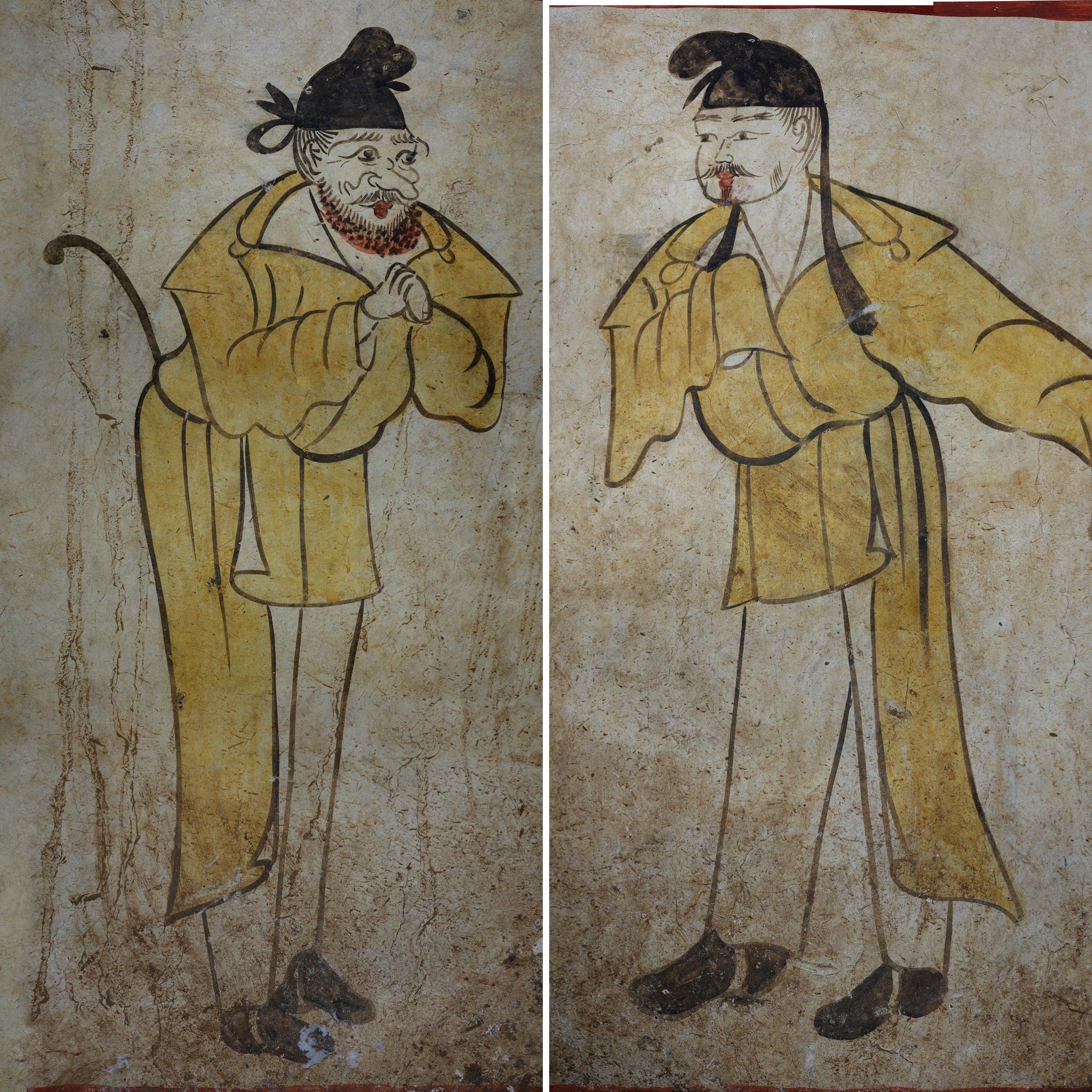
Archaeologists in China have uncovered an exquisitely decorated single-chamber brick tomb from the Tang Dynasty (C.E. 618-907). Discovered during construction in Taiyuan, in the northern Shanxi province, the tomb has been under excavation since 2018. Buried within it is an unspecified man who died at the age of 63 in the year 736.
The tomb’s entrance showcases intricate botanical designs and a pair of figures in yellow robes, who archaeologists believe served as the tomb’s guardians. Inside, a passageway leads to the main burial chamber with a conical ceiling adorned with mythical beasts, including a dragon and possibly a phoenix. The walls of the chamber are decorated with panels that depict everyday life and landscapes.
A panoramic view of the four walls of the burial chamber. Photo courtesy of Jinyang Ancient City Research Institute.
The panels exemplify the “figure under the tree” artistic style of the Tang era, known for its strong outlines and simple shading, which lend the murals a flat, two-dimensional aesthetic typical of artworks from the Shanxi province during the Tang period.
The brick tomb’s painted entrance. Photo courtesy of Jinyang Ancient City Research Institute.
Archaeologists are particularly excited by two panels flanking the chamber’s entrance.
A mural depicting various work scenes in a Tang Dynasty (618-907) tomb excavated in Taiyuan, north China’s Shanxi Province.
The eastern wall’s mural depicts various scenes of daily life: a man using a stone grinder to peel grain shells, a woman operating a stone mill, a man using a pestle to pound rice, a woman drawing water from a well with a counterweight device, and a woman washing clothes in a basin while a pot steams on a wood-burning stove.
The panel on the western wall portrays a woman in a vibrant gown holding a box, with a man from a non-Han ethnic group in a yellow robe behind her. He holds a whip and the reins of camels and horses. Despite not being native to China, camels are a recurring motif in Chinese tomb art. Flanking this scene are panels featuring elaborate flowering plants, designs that are rare in “figure under the tree” murals.
The panel on the eastern wall portrays a woman in a vibrant gown, with a robed man behind her, guiding horses and camels by their reins. Photo courtesy of Jinyang Ancient City Research Institute.
The murals share stylistic similarities with those in the tomb of Wang Shenzi, a ruler from the Tang dynasty, suggesting they might have been painted by the same artist. Wang Shenzi ruled during the Ten Kingdoms period in China and founded the Min state (909-945), one of the smaller kingdoms that emerged following the collapse of the Tang Dynasty and before the rise of the Song Dynasty.
The tomb is being celebrated for its significance in reflecting the Tang Dynasty’s artistic and cultural heritage, for giving insight into the period’s everyday life, and for its beautiful artistic stylings. The excavation’s findings add to the understanding of the Tang Dynasty’s influence on Chinese history and culture, while underscoring the historical importance of Taiyuan as a center of Tang Dynasty culture and politics.